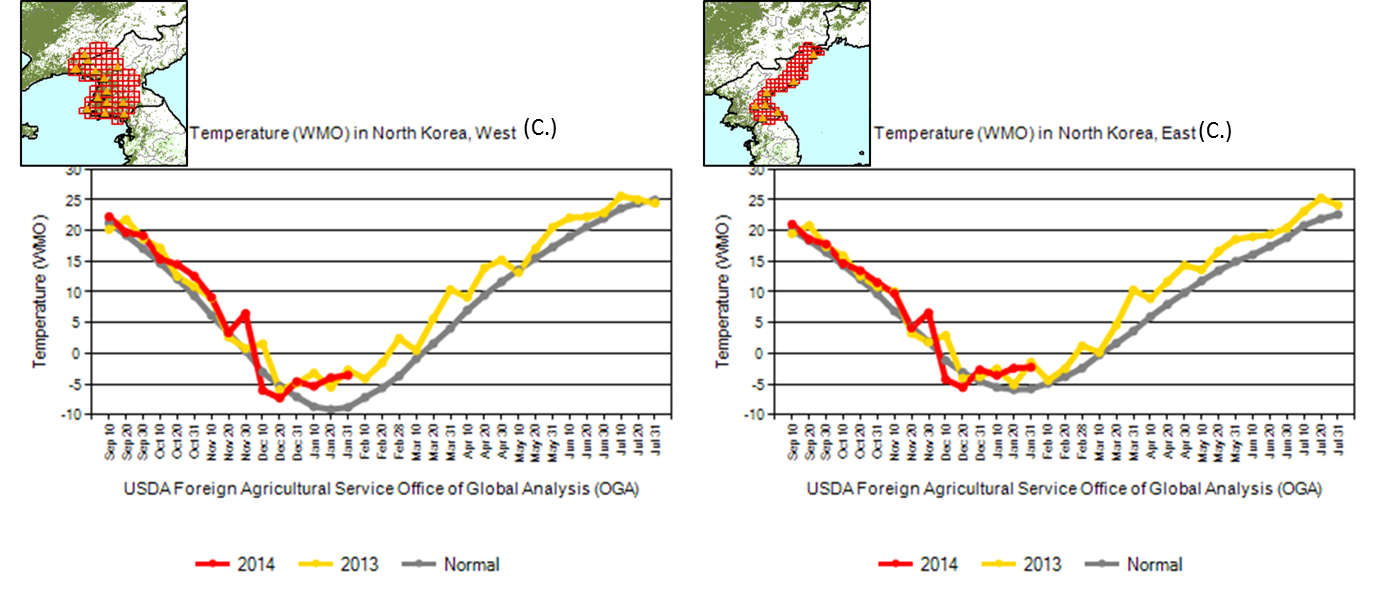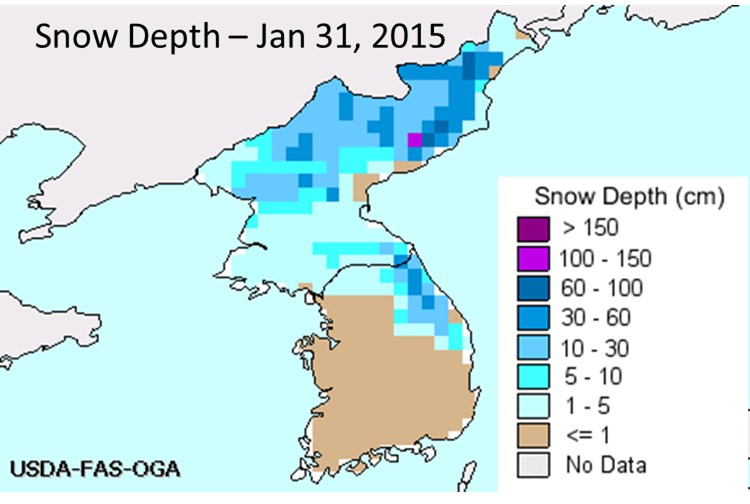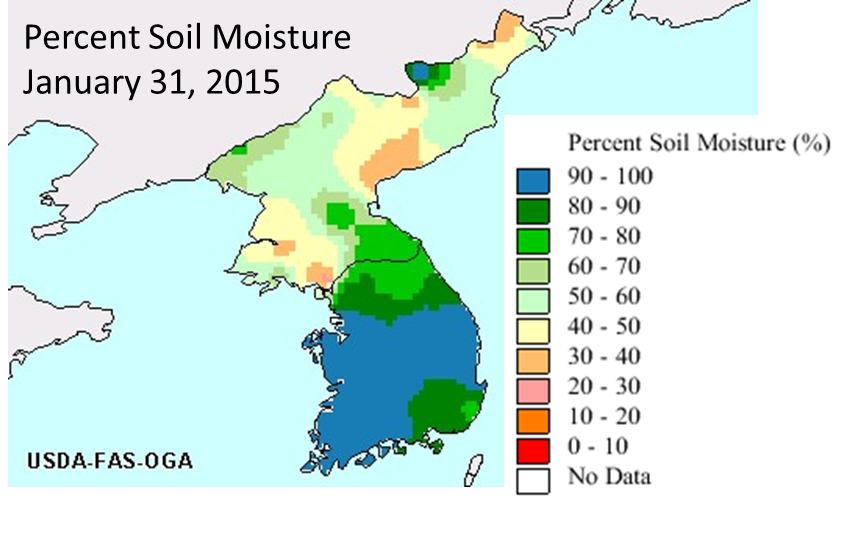Favorable Weather in North Korea for Winter Crops

MODIS image - February 2, 2015
Snow cover shown in white.
The weather has been mostly favorable for North Korea’s winter crops (mainly wheat), which were planted in October 2014 and will be harvested in May/June 2015. The crops benefitted from relatively warm and wet weather in November and went into dormancy on schedule in December. January is usually the coldest and driest month of the year in North Korea, but the weather last month was warmer than normal and there was widespread light to moderate snowfall. The recent snowfall kept soil moisture at near-normal levels and offered the dormant crop some protection against freezing temperatures. However, if this mild temperature pattern continues through February, it could cause winter crops to emerge from dormancy prematurely and increase their vulnerability to winterkill.
North Korea suffered from serious drought in the spring and late summer of 2014 and headed into the 2015/16 season with a large annual rainfall deficit. Although the impact of the deficit is insignificant during the winter, when the demand for moisture by crops is low, emerging winter crops (in February and March) and spring planting (in April and May) will be affected if the drought continues through the spring.
The USDA will issue its initial 2015/16 global crop production estimates on May 12, 2014. Current USDA area and production estimates for grains and other agricultural commodities are available at IPAD’s World Agricultural Production circular or at PSD Online.
Precipitation Charts – from September 1. (2013-14 and 2014-15 compared to normal).
Winter is the dry season in North Korea.

Temperature Charts - from September 1 (2013-14 and 2014-15 compared to normal).
Temperatures in January 2015 have been above normal.

Snow Depth Map – January 31, 2015.
Snow was heaviest in the north and east.

Percent Soil Moisture Map – January 31, 2015.
Soil moisture levels in the North are lower than in the South but near normal for January.

Dry Weather in 2014 – Rainfall Deficit leading into 2015
Eastern North Korea:

Western North Korea:

|

